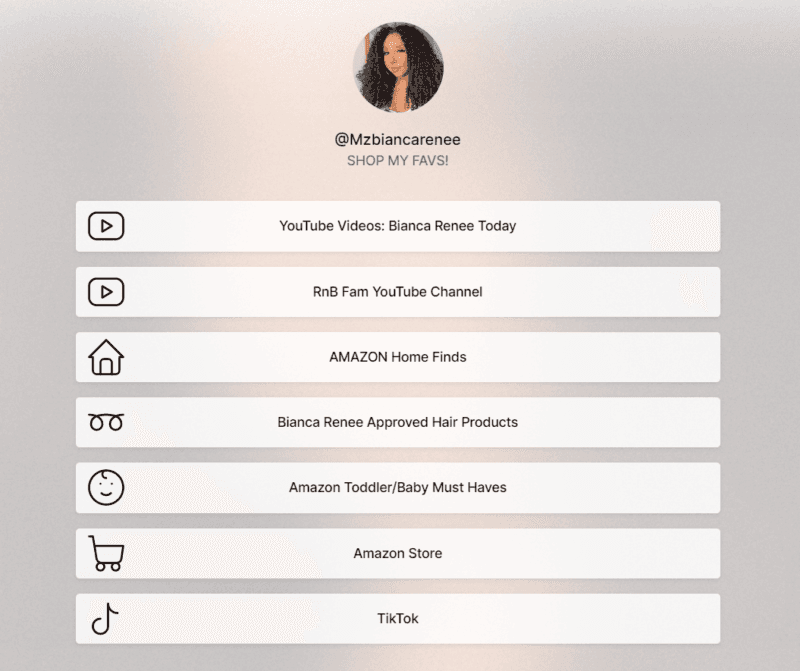Contents

Affiliate marketing is one of the most effective ways to make money online. However, if you don't have a website, you might feel excluded from this opportunity.
Fortunately, you do not need a website to become an affiliate. In fact, you can use a variety of online tools to promote products and earn commissions on sales.
In this post, we'll take a closer look at affiliate marketing and how it works. Then, we'll show you how to do affiliate marketing without a website. Let's get started!
An Introduction to Affiliate Marketing
Affiliate marketing is a strategy in which brands pay individuals a commission for generating traffic and sales. As a content creator, you can use your platform to recommend products and services to your audience using a referral link. This is a unique URL that contains your affiliate ID. You are then paid a commission when users complete an action via your link.
There are many companies that offer affiliate programs. For instance, Social Champ lets you refer your audience to its social media management tools. This company provides automation solutions to help you create, schedule, track, and monitor posts for all major social media platforms:

This is a great option if you utilize social media for your affiliate marketing. Moreover, you will earn a pay-per-sale commission of 30 percent for each successful conversion.
How to Do Affiliate Marketing Without a Website (4 Ways)
A website or blog is a great place to share your referral links. However, you can also promote products on other platforms. Let's look at a few alternative ways to do affiliate marketing.
1. Use Social Media
Social media is a top choice for affiliate marketing. You can add clickable links and discount codes to posts, bios, and captions. Additionally, anyone can use social media. You don't need special skills or knowledge to create an account and build an audience.
Instagram is a popular platform among affiliate marketers. You can add videos and pictures to your story with clickable stickers that link to your affiliate products. If you have over 10,000 followers, you can utilize the swipe-up feature for your links.
You can also post photos and reels of affiliate products to your feed. However, you cannot link directly to posts. Instead, you will need to add the link in your bio and post captions that encourage readers to click on it:

Additionally, Instagram only allows one link per bio. If you have several links to share, you can create a Linktree. This tool enables you to take full advantage of social media marketing by creating one landing page for multiple links:

You can add unlimited affiliate URLs to your Linktree. Then, you can link to it in your bio:

TikTok is another popular option for affiliate marketing. It enables you to create short videos to showcase your products. However, you'll need to create a business account in order to share clickable links on your profile. Additionally, a business account gives you access to a suite of analytics tools.
2. Create YouTube Videos
YouTube is another fantastic option for affiliate marketing. You can discuss affiliate products in your videos and add your referral links in the description box:

You can also become a YouTube Partner and add links directly to videos as end cards. That way, users don't need to look for the link in the description box.
To become a YouTube Partner, your channel must have at least 1,000 subscribers and 4,000 public watch hours in the past 12 months. Furthermore, you will have additional ways to make money as a YouTube Partner, such as earning ad revenue and offering paid channel memberships.
YouTube can be a good option if you're already active on the platform. In addition to offering several revenue streams, the website gets a great deal of traffic as the second most visited website in the world. However, it requires more time commitment, as you'll need to shoot, edit, and post quality videos.
3. Start a Podcast
Podcasts are another great way to share affiliate links. You can incorporate product discussion in your episodes and post the link in the show notes:

If you’re already a podcaster, becoming an affiliate can help you make extra money by recommending products that you like. Podcasts require a great deal of work, so this may not be the best option if you're just starting out.
4. Join Online Communities
Finally, you can use online communities and forums for affiliate marketing. Most of these communinities are open to everyone. Additionally, it requires minimal effort to post and respond in forums. However, you may need to use link shorteners or link to Linktree to avoid being flagged.
Fortunately, you can use our ThirstyAffiliates plugin to shorten your links. What's more, this tool enables you to cloak your links to make the URL more appealing to users. It will also protect your commission by hiding the affiliate ID.
It's important that you review the community guidelines before posting affiliate links. Some websites may ban you for violating their linking rules.
Conclusion
Becoming an affiliate can be an effective way to make a passive income. While a website is a helpful tool for affiliate marketers, you don't need one to share your links.
To recap, here are four alternative ways to promote affiliate products:
- Use social media platforms like Instagram and TikTok to share your links.
- Create YouTube videos for your products and add the links to the description box.
- Mention products and services in your podcasts and post the affiliate links in the show notes.
- Add links to discussion posts in online communities.
Do you have any questions about how to start affiliate marketing without a website? Let us know in the comments section below!
If you liked this post, be sure to follow us on Twitter, Instagram, Facebook, Pinterest, and LinkedIn! And don't forget to subscribe in the box below.



Thanks for this post.
good